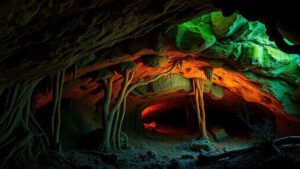The Unseen World of Sub-Arctic Fossil Beds: Hidden Under Layers of Permafrost
The Unseen World of Sub-Arctic Fossil Beds: Hidden Under Layers of Permafrost
The sub-arctic regions hold a treasure trove of fossil beds, mostly concealed beneath thick layers of permafrost. For rockhounds and mineral collectors, these fossil beds represent not only a unique opportunity to unearth ancient life forms but also to study geological and climatic transitions that have shaped our planet over millions of years. This article takes you on an exploration of these hidden wonders and provides practical advice for those wanting to delve into this niche of fossil collecting.
The Significance of Sub-Arctic Fossil Beds
Fossil beds found in sub-arctic regions are significant for several reasons, including their insights into prehistoric ecosystems and climate change. Notable findings include:
- Preserved Organisms: Fossils of woolly mammoths, saber-toothed cats, and various extinct flora are commonly found in these beds, offering a glimpse into life during the Pleistocene Epoch.
- Climatic Insights: Sediments contained within fossil beds can provide information on past climate conditions, including temperature fluctuations and vegetation cover, which are vital for understanding Earth’s climatic history.
The Unique Formation of Fossil Beds
The formation of fossil beds in sub-arctic regions is a complex process influenced by both geological conditions and biotic factors. Key aspects include:
- Permafrost Preservation: The cold temperatures of the permafrost slow down decomposition, allowing organic materials to become well-preserved. For example, mammoth remains found in Siberia have been dated to around 30,000 years ago.
- Runoff and Sedimentation: Seasonal melting contributes to the accumulation of organic materials, which can mix with silt and clay, creating ideal conditions for fossilization.
For rockhounds and mineral collectors eager to explore these sub-arctic fossil beds, several considerations must be taken into account:
- Legalities of Fossil Collection: Familiarize yourself with local laws regarding fossil collection. Many regions have restrictions on the collection of fossils in protected areas.
- Weather Preparedness: The sub-arctic climate is harsh. Dress in layers, and be prepared for sudden weather changes. Carry essential gear, including GPS devices and first-aid kits.
- Respecting the Environment: Follow sustainable practices when collecting fossils. Leave the site better than you found it, and avoid disturbing the surrounding ecology.
Real-World Applications and Discoveries
Several significant discoveries illustrate the value of sub-arctic fossil beds for both scientific research and public interest. Noteworthy examples include:
- The Discovery of the Yuka Mammoth: In 2010, a well-preserved mammoth carcass was discovered in Siberia, providing invaluable data regarding Pleistocene fauna and their adaptations to permafrost conditions.
- Insights into Ancient Ecosystems: Ongoing research on fossilized pollen and seeds extracted from sub-arctic sedimentary layers is shedding light on ancient plant communities and their responses to climate change, particularly how flora has adapted over time.
Actionable Takeaways for Collectors
To maximize your collecting experience in sub-arctic regions, consider the following actionable tips:
- Join Local Geological Societies: Engage with local rockhounding communities for guidance, shared experiences, and potential group expeditions.
- Use Technology: Leverage mobile apps designed for identifying minerals and fossils to enhance your collecting experience.
- Document Your Finds: Keep a detailed record of your fossil discoveries, including location data and environmental conditions. This information will be vital for both personal reference and scientific reporting.
The sub-arctic fossil beds, tucked beneath layers of permafrost, offer a compelling landscape for rockhounds and collectors alike. By understanding their significance, formation processes, and the practicalities involved in collecting, enthusiasts can engage meaningfully with these ancient remnants of our earths history.

